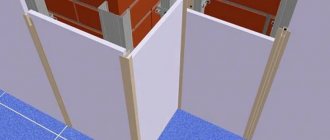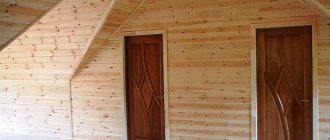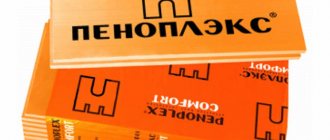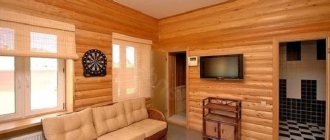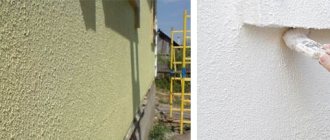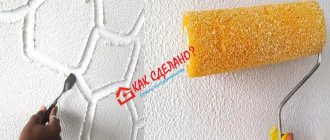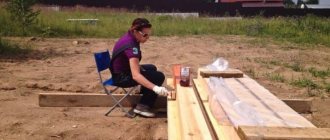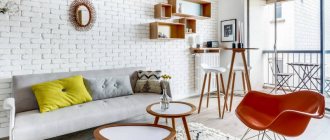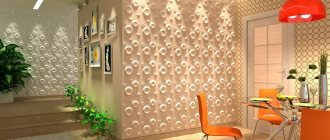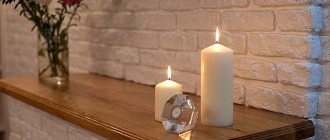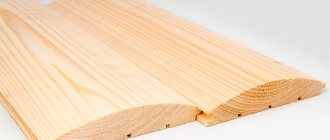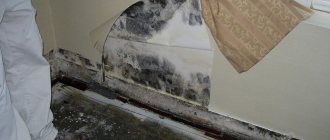What is a finishing sheet
The term “finishing list” means information about building materials spent on finishing any premises (residential, office, retail, warehouse, etc.). The document is used, as a rule, in construction organizations and design companies and is considered a kind of preliminary by calculation.
- Form and sample
- Free download
- Online viewing
- Expert tested
FILES
This document is not independent, but is part of a design project or serves as an annex to a contract for finishing or construction work.
Why do you need a statement?
The sheet is necessary in order to correctly determine how many items of a particular building material will be used to finish the walls, ceilings, floors and partitions in the room. At the same time, in some cases, when the work is complex and multi-stage, a separate statement is calculated for each type of surface (ceiling statement, floor statement, etc.).
When compiled correctly, this document allows you to create an accurate and detailed estimate, which ultimately gives a clear picture of the full cost of finishing during construction or renovation and on the basis of which the necessary purchases are made in the future (but note that the cost of finishing will be affected not only by the volume, but also the quality of purchased building materials).
It should be noted that the statement is recommended to be drawn up regardless of what type of finishing is planned: cosmetic (i.e. fairly simple and superficial), European-quality repairs (deeper, with replacement of plumbing, doors, etc.) or exclusive - with complete redevelopment of the premises. It is clear that the latter will be the most expensive in price, but also the most spectacular.
SNiPs and GOSTs used in interior and exterior decoration of premises.
home
About Us
Maximum possible deviations allowed during internal repair and finishing work
High-quality repairs mean performing the entire list of work on site based on exact values, measurements, technologies and rules. All this information is collected in special lists - building codes and regulations (SNiP), code of construction rules (SP). We strictly adhere to these rules. We have collected the main SNiPs and SPs related to repairs and finishing and posted them on our website for your reference.
Floors
| Maximum deviation | SNiP and SP | |
| Screed. Maximum permissible thickness deviation compared to the design value | 10% | SNiP 3.04.01-87, clause 4.43 |
| The depth of unevenness (screed clearance) under linoleum, laminate or parquet, under coatings on a cement-adhesive layer. Maximum value when checking with a 2-meter level | 2 mm | SNiP 3.04.01-87, clause 4.24, SP 29.13330.2011 “Floors” clause 8.13 |
| Pits (depth) for waterproofing when checking with a 2-meter level | 4 mm | SNiP 3.04.01-87, clause 4.24, SP 29.13330.2011 “Floors” clause 8.13 |
| Pits (depth) for other floor coverings when checking with a 2-meter level | 6 mm | SNiP 3.04.01-87, clause 4.24 |
| Horizontal inclination of the floor level in relation to the area of the room | 0.2%, 50 mm | SNiP 3.04.01-87, clause 4.24 |
| Ceramic tile. Deviation of coating thickness from the design value | 10% | SNiP 3.04.01-88, clause 4.43 |
| Pits (depth) when checking with a 2-meter level | 4 mm | SNiP 3.04.01-87, clause 4.43 |
| Ledges between two tiles | 1 mm | SNiP 3.04.01-87, clause 4.43 |
| Horizontal inclination of the floor level in relation to the area of the room | 0.2%, 50 mm | SNiP 3.04.01-87, clause 4.43 |
| Width of tile joints | 6 mm | SNiP 3.04.01-87, clause 4.43 |
| Piece parquet. Area of glued plank | at least 80% | SNiP 3.04.01-87, clause 4.38 |
| Horizontal inclination of the floor level in relation to the area of the room | 0.2%, 50 mm | SNiP 3.04.01-87, clause 4.43 |
| Deviation from the plane when measuring at a 2-meter level | 2 mm | SNiP 3.04.01-87, clause 4.43 |
| Gaps between planks | 3 mm | SNiP 3.04.01-87, clause 4.43 |
There are some parameters for roughing and finishing work on floor coverings that can be checked without special tools, for example, you can visually verify the absence of bulges, potholes, cracks (hairline cracks are allowed), and auditorily - that there is a uniform ringing sound when tapped. In the case of a dull sound, the surface is not made with high quality and there is no adhesion of materials to each other, which must be reworked. If there is a monolithic screed, or a mechanized screed from the developer, it is necessary to ensure that it is separated from the walls and partitions by damper tape
Ceilings
| Maximum deviation | SNiP | |
| Dropped ceilings. Bends between slabs | 2 mm | SNiP 3.04.01-87 clause 3.66 |
| Horizontal deviation at 1 m | 1.5 mm | SNiP 3.04.01-87 clause 3.66 |
| Number of deviations from horizontal per 1 m | 7 | SNiP 3.04.01-87 clause 3.66 |
When checking the quality of the ceiling covering, be sure to make sure that there are no horizontal panel joints that are not provided for in the project. The lined surface must be horizontally flat without sagging or vibration. The frame must be installed rigidly and not float. When gluing ceiling panels, there should be no peeling at all edges. For a suspended ceiling made of gypsum cardboard, cracks at the junctions of ceiling levels or in any other area of the entire sheet are unacceptable.
Plaster (Basic SNiP 3.04.01-87, clause 3.12)
| Maximum deviation | |||
| Simple plaster as a rule | Improved plaster on beacons | High quality plaster | |
| Depth of unevenness when applying a 2-meter level | 5 mm | 3 mm | 2 mm |
| Number of unevenness when applying a 2-meter level | 3 | 2 | 2 |
| Deviation from the vertical or horizontal over the entire height or length of the surface | 15 mm | 10 mm | 5 mm |
| Deviation of columns, window and door slopes, pilasters, moldings and other decorative items for the entire element | 10 mm | 5 mm | 3 mm |
| Deviation of the radius of a curved surface from the design | 10 mm | 7 mm | 5 mm |
| Deviation of the width of a window or door slope from the design | — | 3 mm | 2 mm |
To manually check the quality of the plastering work performed, you need to make sure that there is a uniform ringing sound when tapping the entire surface. A dull sound is an indicator of poor adhesion of the plaster to the base, which in the future can lead to the collapse of part of the wall. The presence of shells and cracks is not allowed.
Laying ceramic tiles
| Maximum deviation | SNiP | |
| Allowance for chipping inside the seam | 0.5 mm | SNiP 3.04.01-87, clause 3.67 |
| Vertical deviation per 1 m length | 1.5 mm | SNiP 3.04.01-87, clause 3.62 |
| Vertical deviation by building floor height | 4 mm | SNiP 3.04.01-87, clause 3.62 |
| Unevenness of any plane (horizontal, vertical) | 2 mm | SNiP 3.04.01-87, clause 3.62 |
| Deviation of seam alignment vertically and horizontally per 1 m length | 1.5 mm | SNiP 3.04.01-87, clause 3.62 |
| Deviation of seams vertically and horizontally over the entire length of the row | 3 mm | SNiP 3.04.01-87, clause 3.62 |
| Deviation of seam width from the design value | 0.5 mm | SNiP 3.04.01-87, clause 3.62 |
| Amount of unevenness on the entire surface (measured at a 2-meter level) | 2 | SNiP 3.04.01-87, clause 3.62 |
| Seam thickness | 2.5 +/- 0.5 mm | SNiP 3.04.01-87, clause 3.62 |
The main thing you need to pay attention to when accepting tile work is the absence of dips and protrusions in the tile rows horizontally or vertically, as well as the coincidence of the tile seams.
Painting works (SNiP 3.04.01-87, clause 3.12, 3.28, 3.67)
| Maximum deviation | |||
| Simple coloring | Improved roller coating | High quality painting | |
| Deviations from the vertical and horizontal for the entire height or length of the room | 15 mm | 10 mm | 5 mm |
| Number of deviations vertically or horizontally | 3 | 2 | 2 |
| Unevenness of the plane in depth or height | 5 mm | 3 mm | 2 mm |
| Deviation of columns, window and door slopes, pilasters, moldings and other decorative items for the entire element | 10 mm | 5 mm | 3 mm |
| Deviation of the radius of a curved surface from the design | 10 mm | 7 mm | 5 mm |
| Deviation of the width of a window or door slope from the design | — | 3 mm | 2 mm |
| Base moisture level after plastering or puttying | 8% | ||
| Finished coating thickness | not less than 25 microns | ||
When checking the quality of work, you need to make sure there are no stains, splashes, drips, tool marks, or material residues. It is unacceptable for one layer of paint to show through after another.
Wallpaper
| Maximum deviation | SNiP | |
| Residual moisture of the base | 8% | SNiP 3.04.01-87 clause 3.12 |
| Seam edge deviations | 0.5 mm | SNiP 3.04.01-87 clause 3.67 |
Peels, air bubbles, glue stains, as well as wallpapering skirting boards, sockets, and switches are considered unacceptable in wallpaper. In the case of wallpapering with a selection of patterns, it must be precisely selected and match.
Other
| Maximum deviation | SNiP | |
| Window sill: slope of the upper surface | not less than 1% | SNiP 3.04.01-87 clause 3.87 |
| Door frame: deviation from the vertical plane | 3 mm | SNiP 3.04.01-87 clause 3.87 |
| Interior door: distance from the floor | 5 mm | SNiP 3.04.01-87 clause 3.87 |
| Door in the bathroom: distance from the floor | 12 mm | SNiP 3.04.01-87 clause 3.87 |
In what format should the statement be made?
The statement can be made in any form - there is no standard template today. But if the company has its own template developed and approved by management, then the statement must be generated according to its type.
Information about building materials is always entered in the form of a table (it’s more convenient), which can consist of any number of columns and columns (depending on the needs of the customer, the availability of interior elements to be finished, as well as the contractor’s vision of this document).
When creating a statement, you should arm yourself with a calculator and be very careful, since it contains a large number of numbers that need to be multiplied and added.
Repair and finishing - building rules and standards
Repair work in an apartment represents a whole range of technically complex measures for rough and fine finishing of premises, installation of engineering systems, as well as power supply. Regardless of the type of work - be it a comprehensive turnkey repair or, for example, pre-finishing or partial restoration of the operational properties of individual elements - any manipulation by a master is subject to technical norms and standards if (1) such activity affects the safety of buildings and structures (and then necessarily) or (2) it is based on voluntarythe parties' application of building codes or standards.
The most important standards are presented in this section. They establish rules regarding the finishing of premises ( SNiP for finishing work 3.04.01-87), the installation of sanitary systems (SNiP 3.05.01-85), as well as power supply (SNiP 3.05.06-85). Separately, it is necessary to mention GOST R 52059-2003, which defines the standard in the provision of repair services for individual orders.
Now freely available .
Currently, technical regulations are applied on a mandatory basis. In the field of construction, this is the Law of the Russian Federation No. 384-FZ of December 30, 2009, “Technical Regulations on the Safety of Buildings and Structures.” Codes of practice and standards are applied on a voluntary basis, except as required by law. Thus, on a mandatory basis, in addition to the technical regulations, the sets of rules and standards specified in the List approved by Decree of the Government of the Russian Federation No. 1047-r dated June 21, 2010 are also applied (in more detail below on this page). In connection with the work to update the sets of rules, this List is subject to change. In addition, Rostekhregulirovanie publishes a List of sets of rules and standards, as a result of which, on a voluntary basis, compliance with technical regulations on the safety of buildings and structures is ensured (the list was approved by order of Rostechregulirovanie dated 06/01/2010 No. 2079; current edition dated 05/18/2011) .
Please note that SNiP 3.04.01-87 (premises decoration), 3.05.01-85 (plumbing work) and GOST R 52059-2003 (provision of services in the field of apartment renovation) are not included in the List of Codes of Rules and Standards, Application which on a mandatory basis ensures compliance with technical regulations on the safety of buildings and structures, i.e. Such SNiPs and standards are advisory in nature - the parties have the right to apply these documents only on a voluntary basis by fixing an appropriate clause, for example, like: “The quality of work under this contract is determined in accordance with GOST R 52059-2003.” This standard, among other things, contains a reference to the SNiPs listed in this section.
Standards - summary information in tables
| Permissible deviations during repair and finishing work. | |
| This page brings together and presents in the form of tables the main indicators of permissible deviations for repair work on the surface of the floor, walls and ceiling. See also → screed tolerance calculator. | |
| European renovation - interpretation, standards, rules. | |
| European-quality renovation is not only a modern finish, but also adherence to the standards and technical rules in force in European countries. We suggest that you familiarize yourself with the main standards and tolerances. For the first time in Russian! | |
| Permissible deviations during plastering work. | |
| The table presentation sets out the requirements of current Russian and European standards, which determine possible tolerances during plastering work, and also delimit the content of such permissible deviations depending on the type of plaster. | |
| List of summary tables for repair and finishing. | |
| A large variety of tables and reference materials are published on our website. To make it easier for you to search for such tables, we have collected information about them on a special page. |
GOSTs and SNiPs for apartment renovation.
| GOST R 52059-2003 “Services for the repair and construction of housing and other buildings. General technical conditions". Approved and put into effect by Resolution of the State Standard of Russia dated May 28, 2003 No. 162-st. Valid from 01/01/2004 | |
| This document unifies the procedure for placing an order for repair work, its execution by the contractor, as well as the subsequent acceptance of the results of the work. The documents contain references to current norms and standards depending on the type of work. The customer and the contractor may provide in the contract, in particular, a provision according to which repairs in the apartment will be carried out in accordance with the requirements of this GOST. Format - PDF. | |
| Rules and regulations for the technical operation of housing stock. Approved by the resolution of the State Construction Committee of Russia dated September 27, 2003 No. 170. Registration with the Ministry of Justice of the Russian Federation: October 15, 2003 under No. 5176. Valid from: November 3, 2003. | |
| Sections 4 and 5 of these Rules adopted by the State Construction Committee of Russia also establish requirements, the content of which must be taken into account when carrying out redevelopment work (Section 4) and reconstruction (Section 5) of an apartment. Published in full. See also: what is redevelopment and redevelopment, as well as information about the new redevelopment rules of 2011. Format - PDF. | |
| SNiP 3.05.06-85 “Electrical devices”. Approved by Decree of the USSR State Construction Committee dated December 11, 1985 No. 215. Entered into force on July 1, 1986. | |
| This set of rules regulates electrical installation work in an apartment, various stages and procedures associated with laying cables, their switching, installation and connection of various types of electrical products. This set of rules covers the entire range of measures for installing power supply in an apartment according to the project. Format - PDF. | |
| SNiP 3.05.01-85 “Internal sanitary systems” Approved by Decree of the USSR State Construction Committee dated December 13, 1985 No. 224. Entered into force on July 1, 1986. | |
| This SNiP, as its name implies, determines the procedure for carrying out work on the installation and wiring of water supply and sewerage systems in an apartment, installation and connection of sanitary fixtures (see also: cost of plumbing work). → Project updated set of rules “SNiP 3.05.01-85 via link in DOC format. → ATTENTION! , the updated SNiP 3.05.01-85 comes into force . The new set of rules was approved by order of the Ministry of Regional Development of Russia dated December 29, 2011 N 635/17. It was named “SP 73.13330.2012. Set of rules. Internal sanitary systems of buildings. Updated version of SNiP 3.05.01-85.” See text in PDF format. For details of the application of updated SPs during the transition period, see the box below. Format - PDF. | |
| SNiP 3.04.01-87 “Insulating and finishing coatings” Approved by Decree of the USSR State Construction Committee dated 12/04/1987 No. 280. Entered into force on 07/01/1988. | |
| One of the main documents regulating apartment renovation work in terms of both rough and fine finishing . This standard prescribes the procedure for carrying out work, as well as tolerances regarding the installation of plaster and putty layers, gluing or painting the surface of walls; devices of screeds, soundproofing layers; waterproofing the floor surface; repair work on the ceiling surface; facing works of various types. Format - PDF. | |
| SNiP 2.03.13-88 “Floors” Approved by Decree of the State Construction Committee of the USSR dated May 16, 1988 No. 82. Currently, sections 1, 2 (clauses 2.1-2.5, 2.6-2.9), 3-7 are applied mandatory | |
| Currently on mandatory Sections 1, 2 (paragraphs 2.1-2.5, 2.6-2.9), 3-7 apply. By order of the Ministry of Regional Development of the Russian Federation dated December 27, 2010 No. 785, the updated set of rules 29.13330.2011 “Floors. SNiP 2.03.13-88". Updated text of the set of rules. As of 08/01/2011, the list approved by the order of the Government of the Russian Federation dated 06/21/2010 No. 1047-r (application of sets of rules on a mandatory basis) contains an indication of the old text of SNiP and the table of contents system adopted in it. The list of Rostechregudirovaniye (approved by order dated June 1, 2010 No. 2079, as amended on May 18, 2011; application of sets of rules on a voluntary basis), although it contains an indication of the new edition of the specified set of rules, however, uses references to the numbering of sections and paragraphs that were provided for the previous edition of SNiP. Please note that the updated version of the set of rules provides for the manufacture of floors (construction and installation work) in accordance with SNiP 3.04.01. At present, this clause 1.4 does not apply on a mandatory basis. Format - PDF (zip archive). |
SNiPs applied on a mandatory basis
Order of the Government of the Russian Federation dated June 21, 2010 No. 1047-r established that the following previously adopted standards and sets of rules or parts thereof are currently applied on a mandatory basis (extract from the list):
- GOST 27751-88 “Reliability of building structures and foundations.”
- GOST 30494-96 “Residential and public buildings. Indoor microclimate parameters”, section 3.
- SNiP II-25-80 “Wooden structures”.
- SNiP 2.01.07-85 “Loads and impacts. General provisions”, sections 1-4, appendices 1-11.
- SNiP 2.04.01-85 “Internal water supply and sewerage of buildings”, sections 2, 7-9, 10 (clauses 10.4-10.10, 10.12-10.20), 12 (clauses 12.1-12.20, 12.24-12.27), 13 (clauses 13.2- 13.10, 13.12-13.19), 14.
- SNiP 2.03.13-88 “Floors”, sections 1, 2 (clauses 2.1-2.5, 2.6-2.9), 3-7.
- SNiP 23-05-95 “Natural and artificial lighting”, “. sections 4-6, 7 (clauses 7.1-7.51, 7.53-7.73, 7.76, 7.79-7.81), 8-13; Appendix K.
- SNiP 23-03-2003 “Protection from noise”, section 4-13.
- SNiP 23-02-2003 “Thermal protection of buildings”, sections 4-12, appendices B, D, E.
- SNiP 31-01-2003 “Residential multi-apartment buildings”, sections 4. (clauses 4.1, 4.4-4.9, 4.16, 4.17), 5, 6, 8 (clauses 8.1-8.11, 8.13, 8.14), 9-11.
- SNiP 41-01-2003 “Heating, ventilation, air conditioning”, sections 4-6 (clauses 6.1.1-6.4.4, 6.4.6, 6.4.7, 6.5.4, 6.5.5, 6.5.7-6.5 .14, 6.6.2-6.6.26), 7 (clauses 7.1.1-7.1.5, 7.1.8-7.1.13, 7.2.1-7.2.4, paragraphs one and two of clause 7.2.10, clauses 7.2 .13, 7.2.14, 7.2.17, 7.3.1, 7.3.2, 7.4.1, 7.4.2, 7.4.5, 7.5.1, 7.5.3-7.5.11, 7.6.4, 7.6.5 , 7.7.1-7.7.3, 7.8.2, 7.8.6, 7.8.7, 7.9.13, 7.9.15, 7.9.16, 7.10.7, 7.10.8, 7.11.18), 9-11, 12 (clauses 12.7-12.9, 12.11-12.21), 13 (clauses 13.1, 13.3-13.5, 13.8, 13.9) → updated; see box.
- SNiP 52-01-2003 “Concrete and reinforced concrete structures”, sections 3-8.
On January 1, 2013, the updated SP 60.13330.2012 (heating, ventilation and air conditioning) came into force; For detailed information, see: rules for installing air conditioners
As you can see, SNiPs, which have retained binding force, only in some part relate directly to the issues of technical standardization of the results of repair and finishing work in an apartment (see in detail - “Which SNiPs are mandatory to apply?”).
The situation when existing sets of rules are updated and replaced by updated editions is usually called a transition period, during which old SNiPs and SPs, included in the lists of mandatory or voluntary application, continue to operate until changes are made to these lists (see letter from the Ministry of Regional Development).
Interpretation of some terms
Quality of repair work : The Law “On Technical Regulation” limits the effect of previously adopted SNiPs. The old construction rules should be replaced by new technical regulations (mandatory for use), as well as standards and codes of practice (applied on a voluntary basis). How is the quality of repair determined under such conditions?
Author: Attractive Repair Studio.
Document preparation
In terms of designing the statement, everything is also left to its compiler - the document can be done in handwritten or printed form. The sheet can be filled with a regular sheet of paper or a form with company details and the organization’s logo. If the statement is made in electronic form, it should be printed after final formation. It is not necessary to put a signature or stamp on the document; it is enough to note which design project or agreement it is an annex to (indicating its number and date of preparation).
It is recommended to make the document in two identical copies, one of which is transferred to the customer, the second remains with the contractor.
Sample statement of finishing of premises
If you need to create a list of interior decoration that you have never done before, look at the example and comments to it - on their basis you can easily draw up the document you need.
- Be sure to write at the beginning
- name of the organization whose representative draws up the statement.
- Then put the date of its formation,
- the object in which finishing work will be carried out,
- as well as the position and full name of the employee who made it.
- If necessary, assign a number to the statement.
- After that, move on to the main part.
- As mentioned above, it is best to form it in the form of a table.
- Be sure to include it
- The name of a room,
- and then in order the name of the surface (floor, ceiling, wall, partition, etc.),
- indicate what type of materials are planned to be used and in what volume,
- mark the number of square or linear meters.
- If there are any notes, be sure to mark them as well.
- The document can be supplemented with any other information that is important in your particular case. In addition, you can attach some other papers to the statement, making sure to note their presence separately on the form.
Apartment renovation according to the norms and standards of SNiP and GOST
All renovation work in the apartment is a complex of technically complex works on finishing the premises, installing engineering systems, plumbing and electrical equipment. Regardless of the complexity of the work - be it a comprehensive turnkey renovation or partial restoration of the operational properties of the premises - all this is subject to technical norms and standards, if such activities affect the safety of buildings and structures, then this is mandatory! There are also exceptions to the rules when standards and regulations are based on the voluntary application by parties of sets of building rules or standards in repair and construction work.
The most important standards establish rules regarding the finishing of premises ( SNiP for finishing work 3.04.01-87), the installation of sanitary systems (SNiP 3.05.01-85), as well as power supply (SNiP 3.05.06-85). Separately, it is necessary to mention GOST R 52059-2003, which defines the standard in the provision of repair services for individual orders.
technical regulations are applied on a mandatory basis , in construction - this is the Law of the Russian Federation No. 384-FZ of December 30, 2009 “Technical Regulations on the Safety of Buildings and Structures” . Codes of practice and standards are applied voluntarily, except as required by law. Thus, on a mandatory basis, in addition to the technical regulations, the sets of rules and standards specified in the List approved by Decree of the Government of the Russian Federation No. 1047-r dated June 21, 2010 are also applied. In connection with the work to update the sets of rules, the specified List is subject to change. In addition, Rostekhregulirovanie publishes a List of sets of rules and standards, as a result of which, on a voluntary basis , compliance with technical regulations on the safety of buildings and structures is ensured (the list was approved by order of Rostechregulirovanie dated 06/01/2010 No. 2079; current edition dated 05/18/2011) .
Please note that SNiP 3.04.01-87 (premises decoration) , 3.05.01-85 (plumbing work) and GOST R 52059-2003 (provision of services in the field of apartment renovation) are not included in the List of codes of rules and standards, application which on a mandatory basis ensures compliance with technical regulations on the safety of buildings and structures, i.e. Such SNiPs and standards are advisory in nature - the parties have the right to apply these documents only on a voluntary basis by fixing an appropriate clause, for example, like: “The quality of work under this contract is determined in accordance with GOST R 52059-2003.”
Requirements for electrical installation work
Electrical installation work in the apartment is regulated by SNiP 3.05.06-85. During a major overhaul, it is recommended to completely replace all electrical wiring. We list just a few rules that are the most important.
The load on the outlet should be no more than 1500W. All information about current and voltage is available on the socket cover. The socket should be placed so that it does not experience external mechanical influences.
Socket outlets should be located at a height of 500 to 1000 mm from the floor. For sockets above the baseboard, a height of no less than 300 mm is allowed, and they must have a protective cover - this helps prevent short circuits.
For safety reasons, it is prohibited to place sockets near grounded areas of the apartment. The distance from grounding must be at least 500 mm. The use of sockets in bathrooms and bathrooms is prohibited.
According to standards, there should be one outlet for every 6 square meters of living space.
Requirements for plumbing work
Repair of plumbing and water supply belongs to the group of hidden ones, therefore, increased demands are placed on such repairs, since if defects occur, it will be almost impossible to correct the damaged area without damaging the wall finishing. All work on the installation of water supply, sewerage, installation of toilets, sinks and bathtubs, as well as shower cabins must be carried out in accordance with SNiP 2.04.01-85.
Often, when installing or dismantling metal parts of a water supply system, electric or gas welding is used. According to safety regulations, it is prohibited to use the burner near combustible and flammable objects. Turn off the burner immediately after finishing work and put it aside.
All plumbing products that will be installed in the bathroom and toilet must comply with GOST. In addition, the rules prohibit placing a bathroom above the living quarters of neighbors (in multi-story buildings).
Requirements for the ventilation system
According to the standards for ventilation systems, the air exchange must be at least 110 cubic meters. m./h. It is strictly prohibited to make changes to the design of the ventilation systems of the apartment, as this may damage the ventilation of the entire building. When repairing, it is necessary to seal interfloor openings and seams. Blocks of ventilation ducts should not have leaks, as this can lead to the inoperability of the hood.
Other repairs
Since apartment renovation includes many activities, it is not possible to list all the requirements for the quality of construction work in a short article. However, it should be remembered that almost every type of repair work has corresponding standards. This applies to finishing the ceiling and walls of residential premises, repair work related to floor coverings, including pouring screed. Work related to the installation and dismantling of heating systems is regulated. Particular attention should be paid to the standards when remodeling an apartment - this type of design work requires numerous approvals.
Regulations and standards are developed in order to ensure the required quality of repair work. An apartment renovated in accordance with the entire set of rules never raises any complaints either from the owners or from the municipal authorities.
